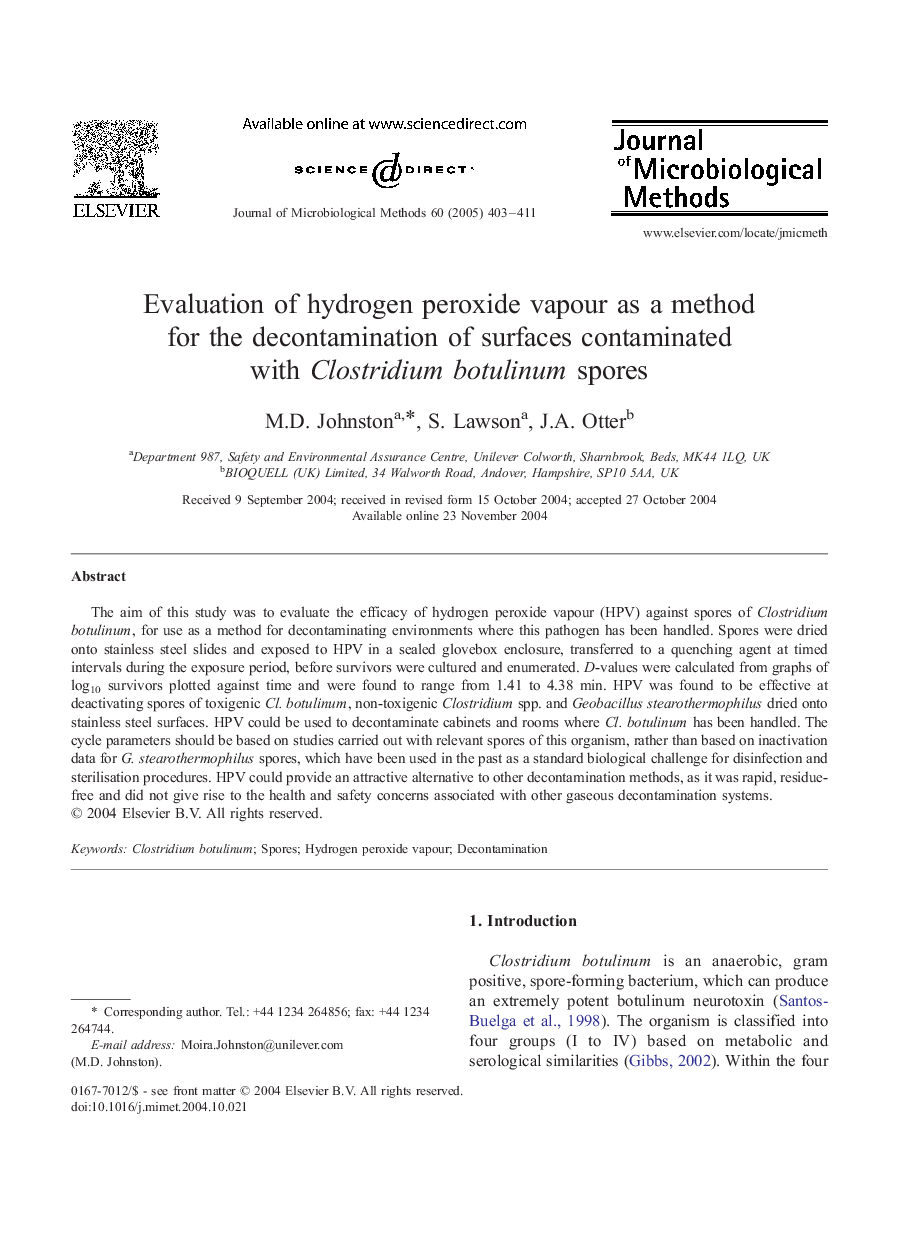| کد مقاله | کد نشریه | سال انتشار | مقاله انگلیسی | نسخه تمام متن |
|---|---|---|---|---|
| 9903460 | 1545952 | 2005 | 9 صفحه PDF | دانلود رایگان |
عنوان انگلیسی مقاله ISI
Evaluation of hydrogen peroxide vapour as a method for the decontamination of surfaces contaminated with Clostridium botulinum spores
دانلود مقاله + سفارش ترجمه
دانلود مقاله ISI انگلیسی
رایگان برای ایرانیان
کلمات کلیدی
موضوعات مرتبط
علوم زیستی و بیوفناوری
بیوشیمی، ژنتیک و زیست شناسی مولکولی
بیوتکنولوژی یا زیستفناوری
پیش نمایش صفحه اول مقاله

چکیده انگلیسی
The aim of this study was to evaluate the efficacy of hydrogen peroxide vapour (HPV) against spores of Clostridium botulinum, for use as a method for decontaminating environments where this pathogen has been handled. Spores were dried onto stainless steel slides and exposed to HPV in a sealed glovebox enclosure, transferred to a quenching agent at timed intervals during the exposure period, before survivors were cultured and enumerated. D-values were calculated from graphs of log10 survivors plotted against time and were found to range from 1.41 to 4.38 min. HPV was found to be effective at deactivating spores of toxigenic Cl. botulinum, non-toxigenic Clostridium spp. and Geobacillus stearothermophilus dried onto stainless steel surfaces. HPV could be used to decontaminate cabinets and rooms where Cl. botulinum has been handled. The cycle parameters should be based on studies carried out with relevant spores of this organism, rather than based on inactivation data for G. stearothermophilus spores, which have been used in the past as a standard biological challenge for disinfection and sterilisation procedures. HPV could provide an attractive alternative to other decontamination methods, as it was rapid, residue-free and did not give rise to the health and safety concerns associated with other gaseous decontamination systems.
ناشر
Database: Elsevier - ScienceDirect (ساینس دایرکت)
Journal: Journal of Microbiological Methods - Volume 60, Issue 3, March 2005, Pages 403-411
Journal: Journal of Microbiological Methods - Volume 60, Issue 3, March 2005, Pages 403-411
نویسندگان
M.D. Johnston, S. Lawson, J.A. Otter,